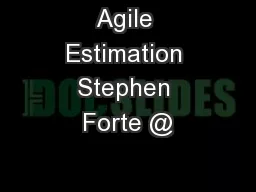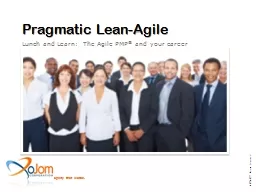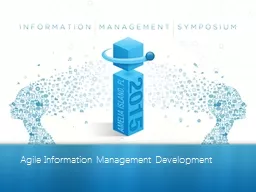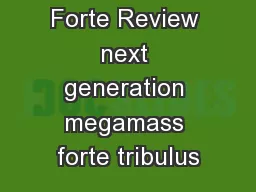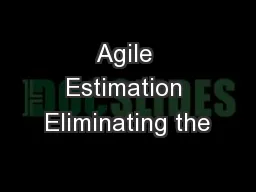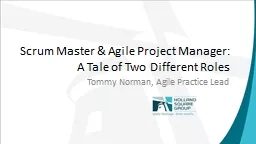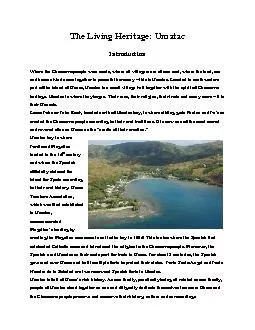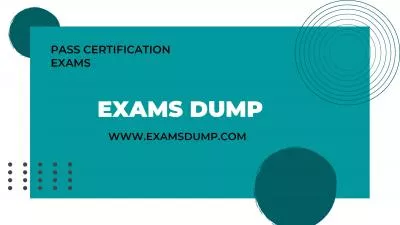PPT-Agile Estimation Stephen Forte @
Author : conchita-marotz | Published Date : 2018-02-06
worksonmypc Chief Strategy Officer Telerik DPR202 Bio Chief Strategy Officer of Telerik Certified Scrum Master 21st TechEd of my career Active in the community
Presentation Embed Code
Download Presentation
Download Presentation The PPT/PDF document "Agile Estimation Stephen Forte @" is the property of its rightful owner. Permission is granted to download and print the materials on this website for personal, non-commercial use only, and to display it on your personal computer provided you do not modify the materials and that you retain all copyright notices contained in the materials. By downloading content from our website, you accept the terms of this agreement.
Agile Estimation Stephen Forte @: Transcript
Download Rules Of Document
"Agile Estimation Stephen Forte @"The content belongs to its owner. You may download and print it for personal use, without modification, and keep all copyright notices. By downloading, you agree to these terms.
Related Documents

